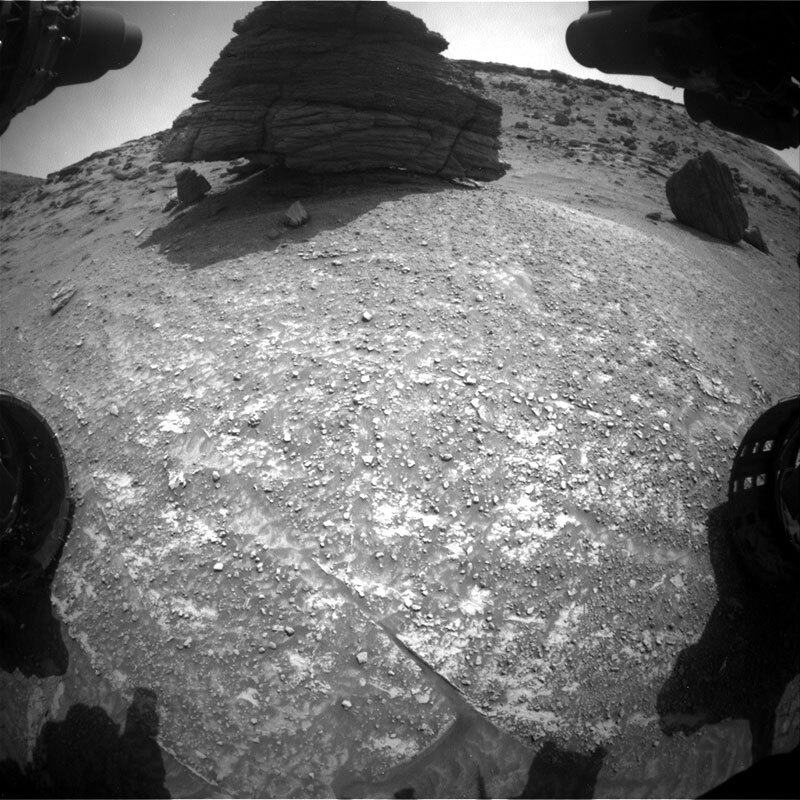3 min read

We have been making our way to a large boulder “Ilha Nova Destino” (which from the distance looks remarkably like the Hogwarts Sorting Hat from Harry Potter!) and landed about 3 metres back from the block. Although we would have loved to get closer, the boulder is as large as the rover (as tall as an SUV) and considerably less stable looking, appearing to be almost perched up on one side. To reduce danger to Curiosity, we planned to keep our distance, just getting close enough for ChemCam LIBS.
ChemCam will combine LIBS compositional measurements (on targets “Serra Dourada,” “Serra Nova Olinda” and “Serra da Lua”) and RMI imaging (on targets “Ilha de Maraca” and “Ilha Sao Lourenco”) to conduct a very thorough survey of the rock. Mastcam will undertake a multispectral analysis of the boulder, and image “St Marys” along the base of the boulder, looking at the contact with the underlying bedrock. Mastcam will also target a second large float rock “Wineperu,” which can be seen to the right of the Ilha Nova Destino boulder in the Front Haz camera image above.
As APXS Strategic Planner this week, I was disappointed that we would not get close enough to use APXS to look at the composition of this large boulder. But, almost magically, when we started planning this morning, we discovered a small float block that may have broken off Ilha Nova Destion - you can see this float "Monte Caburai" in the shadow in front of the boulder in the Front Haz camera image. This float block was close enough to allow both APXS and MAHLI to analyze it. Additionally, MAHLI were able to add a “dogs-eye” (a set of overlapping images which are used to make a larger mosaic) along the base of Ilha Nova Destino, looking at the layering.
In addition to this, ENV will continue to monitor environmental conditions in Gale, tracking dust level changes in the atmosphere and watching for dust devils on the ground. REMS will record temperatures and DAN continues to look for evidence of hydrogen (hydrogen detection may indicate the presence of water in minerals). We will drive onwards on the third sol of the plan, driving to the right past Wineperu, which will allow us to look back at Ilha Nova Destino and get some images of the back of the boulder.
Written by Catherine O'Connell-Cooper, Planetary Geologist at University of New Brunswick







